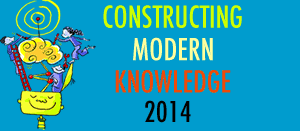This video is a talk given by Dr. David Finkelhor, is the Director of the Crimes against Children Research Center, Co-Director of the Family Research Laboratory and Professor of Sociology at the University of New Hampshire, entitled “The Internet, Youth Deviance and the Problem of Juvenoia”
Is the internet really an amplifier for youth deviance, bad behavior, and risk? Or is it just the opposite? Are we simply applying age-old paranoia about youth (juvenoia) to the newest technology and coming to all the wrong conclusions? Could the Internet be in fact promoting better, healthier culture, identity exploration with less risk, and increased accountability for personal actions? Dr. David Finkelhor takes on these questions with research, facts, historical perspectives — and connections with the fields of child development, human behavior, and psychology.
This talk is well worth watching - especially if you are dealing with parents or colleagues who take it on face value that the Internet is making children stupid, cheapening culture, and is the onramp to deviant behavior and predators.
The Internet, Youth Deviance and the Problem of Juvenoia on Vimeo on Vimeo
This video provides a lot of food for thought:
- Why do we label and blame kids for normal behavior?
- Is a fear OF children masquerading as a fear FOR children?
- Is the Internet similar to other technologies that caused social changes (like cars, TV, phones, etc.)? Or is it vastly different?
- Is “stranger danger”, sexting crackdowns, and technophobia really about protecting kids or is it political grandstanding and a way to sell fear-based products?
- Why do we ignore the many indications of better, healthier, connected, smarter youth and believe all too easily that children today are narcissistic, alienated, and addicted to techno-drivel?
Love your thoughts!
Sylvia

